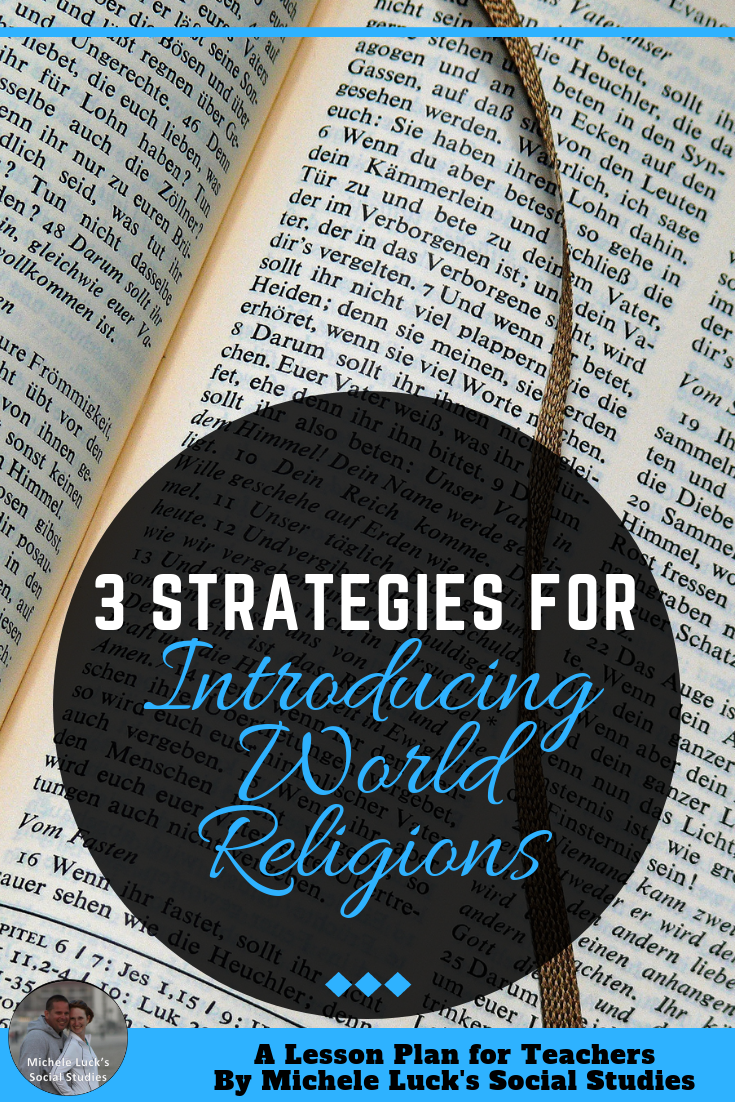Especially with today’s political climate, teaching religion in the classroom may seem controversial or dangerous. However, no matter how “hot” the topic, World Religions are an integral part of teaching World History to your middle school and high school students. Foregoing thorough instruction of World Religions would be detrimental to your students. Therefore, teaching World Religions is best done from a strategic approach. Employing compare and contrast techniques will help your students to grasp an intellectual understanding from the beginning.

While some World History topics lend to a boring lecture with overloading information, introducing World Religions with interactive tactics like walking tours, response groups, and comparison centers, ensures that middle school and high school students are intrigued and immediately able to draw similarities and differences from their study. Doing so will make it easier to digest new information and retain that information for testing time. Using these interactive methods to introduce World Religions not only makes for easy-to-plan lessons but also easy-to-execute activities that will leave your students with a deep understanding of the content.

Walking Tours
Walking Tours are a great way to get students up out of their seats and moving around the classroom, engaging them with the otherwise “boring” World History content. These tours allow them the opportunity to collect information about each religion by studying subtopics like location, population, basic teachings, practices, and more. By gathering this information for different religion groups, it allows students a better understanding of the basics of each religion, setting them up to easily compare and contrast between religions.

Response Groups
Allowing students the opportunity to collectively research and respond as a group, response groups provide historical information that students can digest, discuss, and then share. Group activities such as this allow your students exposure to differing perspectives, the ability to take on leadership roles and find strengths within the group, and the opportunity to regurgitate the information aloud, ensuring recall.

Comparison Centers
Lastly, bringing all information together in a comparing and contrasting activity will provide students the chance to search for similarities and differences among religions, draw conclusions about their origins and practices, and mentally form bonds to help them to retain the information they’ve studied. Using charts to compare subtopics of each religion, i.e. the Laws of each World Religion, students are able to easily draw conclusions and grasp understanding of significant information.
Though teaching World Religions can be intimidating, using well-prepared and organized activities such as these Walking Tours, Response Groups, and Comparison Groups are sure to make the lessons more engaging, fun, and easier to execute! Even easier, you can choose your format and use the printable PDF files for an engaging Interactive Classroom lesson, or you can use the digital Google Drive format for an interactive lesson with little prep. Check out other World Religions activities for further study and engagement.

Happy Teaching!
